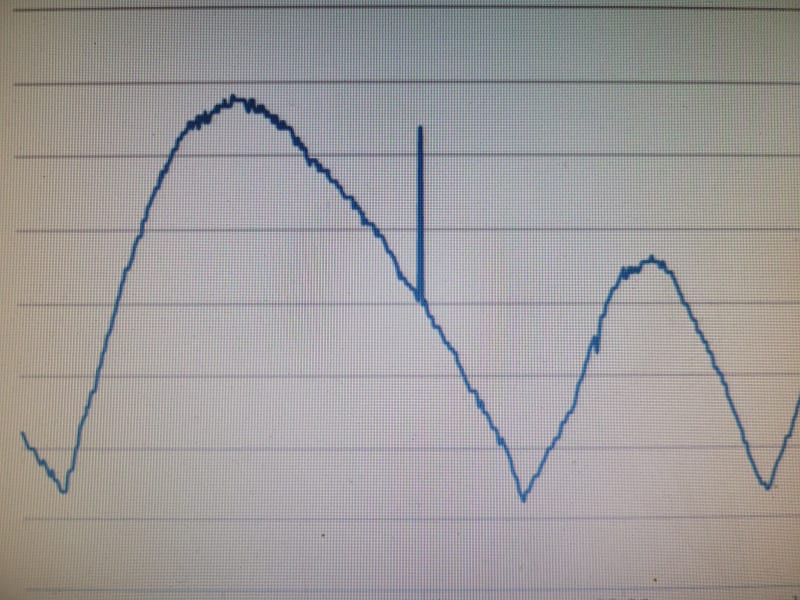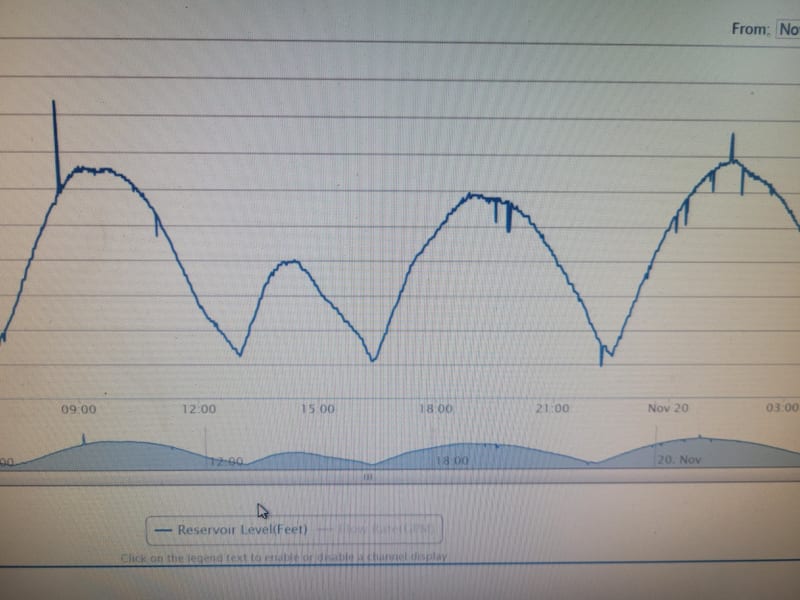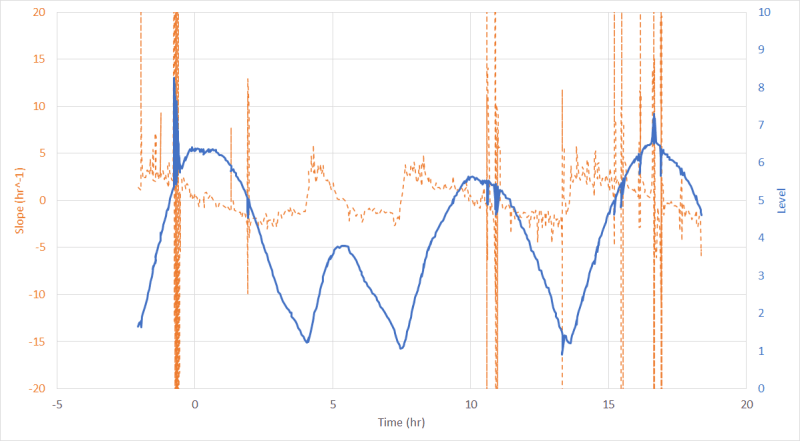hydrae
Mechanical
- May 8, 2003
- 826
Got a problem I haven't seen before,
got these spikes in the output of a
submersible pressure transducer

These spikes occur at random times about once a day or so
This is measuring level in a water tank
Tank is 24 ft tall
The reading ignoring the spikes is cycling between 18 and 20 ft as expected
Range of the transducer is 0 to 33 ft
Any Ideas?
Hydrae
got these spikes in the output of a
submersible pressure transducer

These spikes occur at random times about once a day or so
This is measuring level in a water tank
Tank is 24 ft tall
The reading ignoring the spikes is cycling between 18 and 20 ft as expected
Range of the transducer is 0 to 33 ft
Any Ideas?
Hydrae


